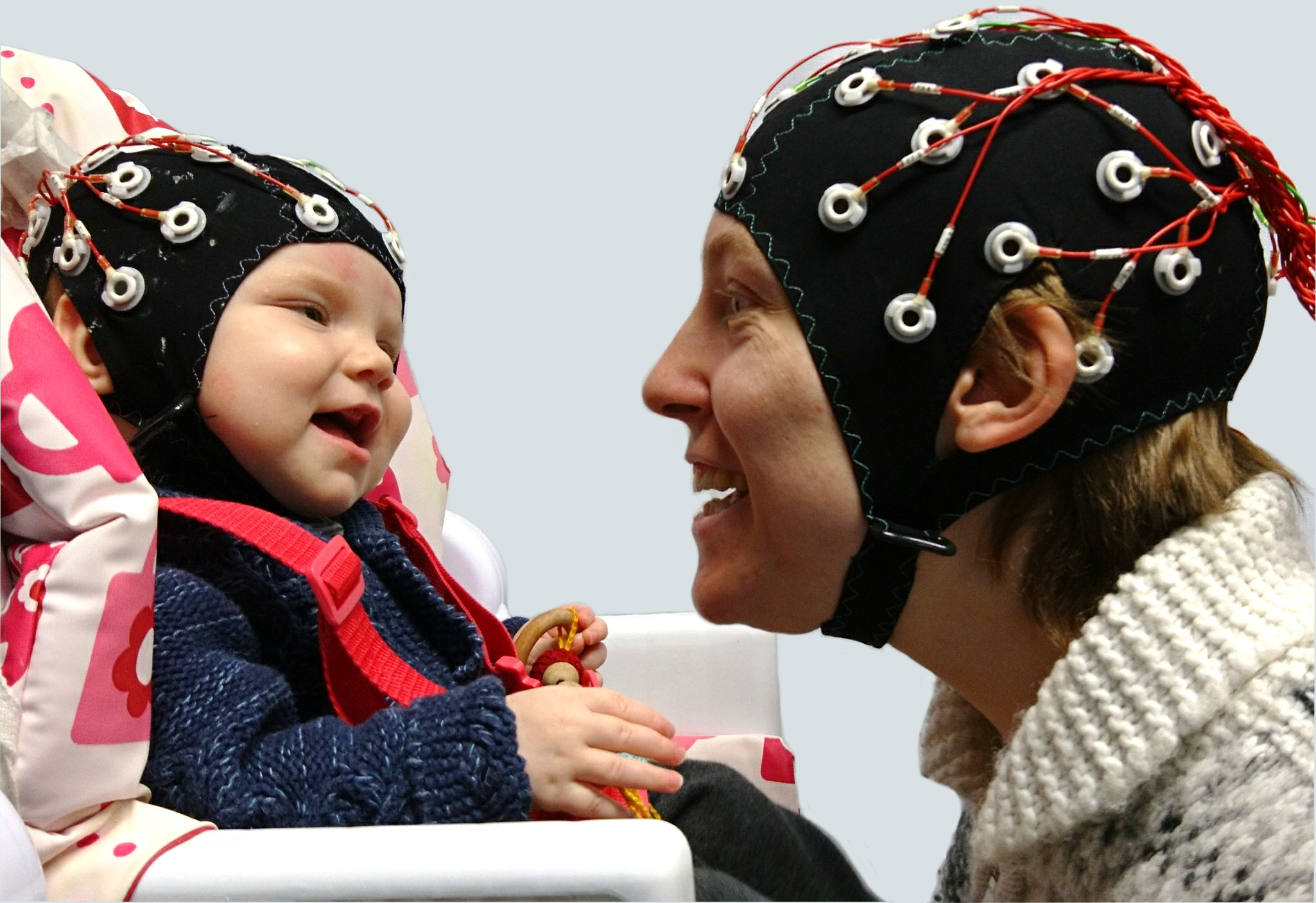
A new study has found that when adults and babies look at each other, their brain waves sync up. This creates what researchers call “a joint networked state” that facilitates communication between the two of them.
The study, while small—just 17 babies in one experiment and 19 in the other—also found that babies vocalize, or try to communicate, more when this joint networked state is in effect. Researchers believe that the babies’ “neural synchronization” is kicked up a notch by an adult’s gaze. “Neural synchronization may provide a mechanism by which infants construct their own earliest social networks,” says the study.
It is already known that adults communicate more effectively when they are neurally synchronized. This is partly why face-to-face conversations are much less likely to be misunderstood than conversations over text, or even over the phone. It ‘s also known that when parents and babies interact, other aspects of their behavior can fall into sync, including their emotions and heart-rate. This study suggests that brain activity also synchronizes.
For the study, researchers at the Baby-LINC Lab at the University of Cambridge in the UK showed 17 babies videos of adults singing nursery rhymes. In the first video, the singers were looking straight at the babies. In the second they weren’t, and in the third, their heads were turned but their eyes were directed towards the infant.
While the babies watched the videos, researchers monitored their brainwave patterns via electroencephalography, or EEG. They compared the patterns to those of the singing adults which had been previously recorded. They found that the patterns matched more strongly when the baby could see the woman’s eyes and most strongly when the babies were watching the videos of an adult sing with her head turned away but looking at the child. The researchers believe that might be because that pose suggests that the person singing is intentionally looking at the baby.
Then researchers set up 19 real adult-baby singing sessions and monitored both individuals’ brains at the same time. In that experiment, both the infants and the adult became more synchronized to each other’s brain activity when mutual eye contact was established. Babies were still engaged with the singer when she looked away, but their brain activity didn’t match up as much. Babies also made more sounds while they were holding the gaze of the adult, signaling that they wanted to communicate. This led the researchers to believe that brainwave synchronization is about more than just looking at a face or seeing something interesting, but about a shared intention to communicate, the very beginnings of the ability to become a social being.
More Must-Reads from TIME
- Cybersecurity Experts Are Sounding the Alarm on DOGE
- Meet the 2025 Women of the Year
- The Harsh Truth About Disability Inclusion
- Why Do More Young Adults Have Cancer?
- Colman Domingo Leads With Radical Love
- How to Get Better at Doing Things Alone
- Michelle Zauner Stares Down the Darkness
Contact us at letters@time.com